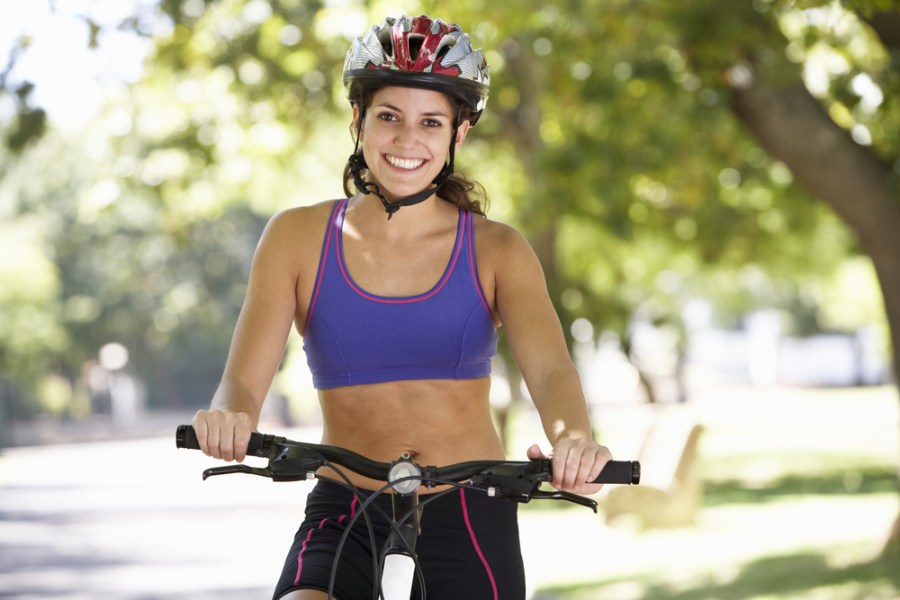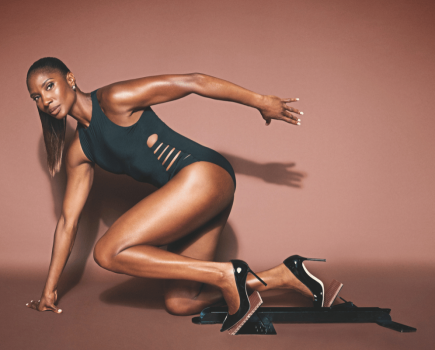The sense of freedom you can get from cycling is one of the best reasons to get back on your bike. But there might be other feelings that are a bit less pleasant! If you’re sore and uncomfortable on a ride it will not only dent your motivation, but could lead to you sitting in an awkward position and giving yourself an injury. Getting the right saddle can make a big difference.
What is saddle soreness?
You can experience pain across any area that’s in contact with the saddle. It’s caused by a combination of friction, sweat, body weight pressure and reduced blood flow and can mean aches, red skin and chafing.
How to choose a bike saddle
Firstly, make sure you’ve actually got a woman’s saddle! ‘I see a lot of women on men’s saddles,’ says Michelle Chappell, from On Your Bike. ‘Men’s saddles have a longer, thinner “nose” at the front, and when you put women on them, we shift our weight so there’s a lot of pressure on our bones.’ It’s worth trying out several different styles and sizes with an expert to help. ‘Everybody needs a different saddle – the width at the back should be relative to your mass, and your fitness level, as muscle and fat can hurt in different ways.’ Women’s saddles sometimes have a dip in the middle, which can relieve pressure on the softer tissue, and Michelle also recommends either a gel saddle, or one with plenty of give.
Your cycling posture can help prevent pain
‘If you’re slumping on your saddle – which most of us do without thinking – you’re not considering which parts of your body are taking your weight,’ says Michelle. ‘A dipped belly puts the weight to the front of your pubic bone – and that hurts!’ If you suck in your core, push your shoulders back and keep your neck up, your weight will be more evenly distributed. It’s also good to get into the habit of standing up out of your saddle every 10-15 minutes to help restore your blood flow.
Padded shorts and chamois cream
Padded shorts or pants give you protection and British Cycling recommends you don’t scrimp on this. Also, if you’re not wearing specialist underwear, it’s better to wear shorts with nothing underneath, to avoid additional chafing. And always wear clean shorts to prevent infection. You can also buy chamois cream that you can add to your body and the padding of your shorts before riding – it reduces friction, hydrates the skin and prevents cracking.
How to choose a bike helmet
With so many makes and models to select from choosing a helmet can be confusing, but with some expert advice and the right fit you will hardly know you’re wearing one. Follow our advice to get the right one for you…
- SAFETY FIRST: Make sure your helmet has passed the European standard CE mark test. You can check this by looking at the label inside the helmet.
- RETENTION DEVICE: Sometimes referred to as a cradle, this is the part that keeps the helmet snug and secure on your head. Most have a dial or sliding ratchet system that allows for adjustment and, ideally, you should look for one that allows vertical as well as horizontal adjustment. One-handed adjustment is a plus for tweaking your fit while on-the-go. Once adjusted, the helmet should sit square on your head, just above your eyebrows and should not be tilted backwards or forwards.
- EPS LINER: This is the name for the bulk of the helmet, which crumples and deforms to absorb the shock of impact if you should crash. It is usually made of expanded polystyrene, but some more expensive helmets now also have a skeleton inside, often made of carbon fibre. You should always discard a helmet after a significant crash and closely inspect it for damage after any impact.
- CARAPACE: The shiny outer shell is not just there to look pretty. It protects the EPS liner and ensures that in the event of an accident it slides along the roads rather than suddenly jarring to a halt.
- VENTS: Intake vents at the front suck air in which is channelled over and around your head and then out via vents at the rear, creating airflow through the helmet.
- PADS: The pads are located on the inside of the helmet to ensure a comfy fit. Look for removable ones that you can wash or replace and ideally that have also been treated with some form of anti-bacterial compound. Some helmets allow you to swap in heavier liners for use in cold conditions.
- STRAPS: These are usually made of nylon webbing and are adjusted with cam locks beneath your ears and at the buckle. Take your time to get the fit just right. The locks should sit just below the bottom of your ears and the straps should be snug under your chin with approximately a two-finger gap. Make sure the buckle is comfortable, not digging into your face or chin and that any excess strapping is secured or cut away.
- In association with On Your Bike
- Download a free beginner’s cycling training plan
- How to choose the perfect bike







